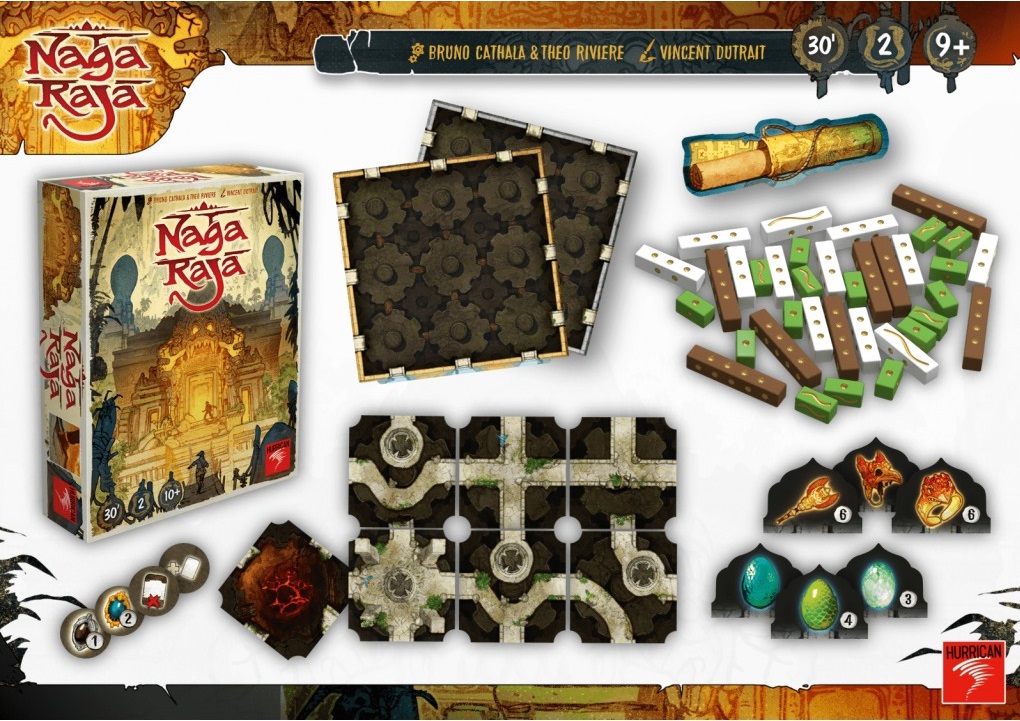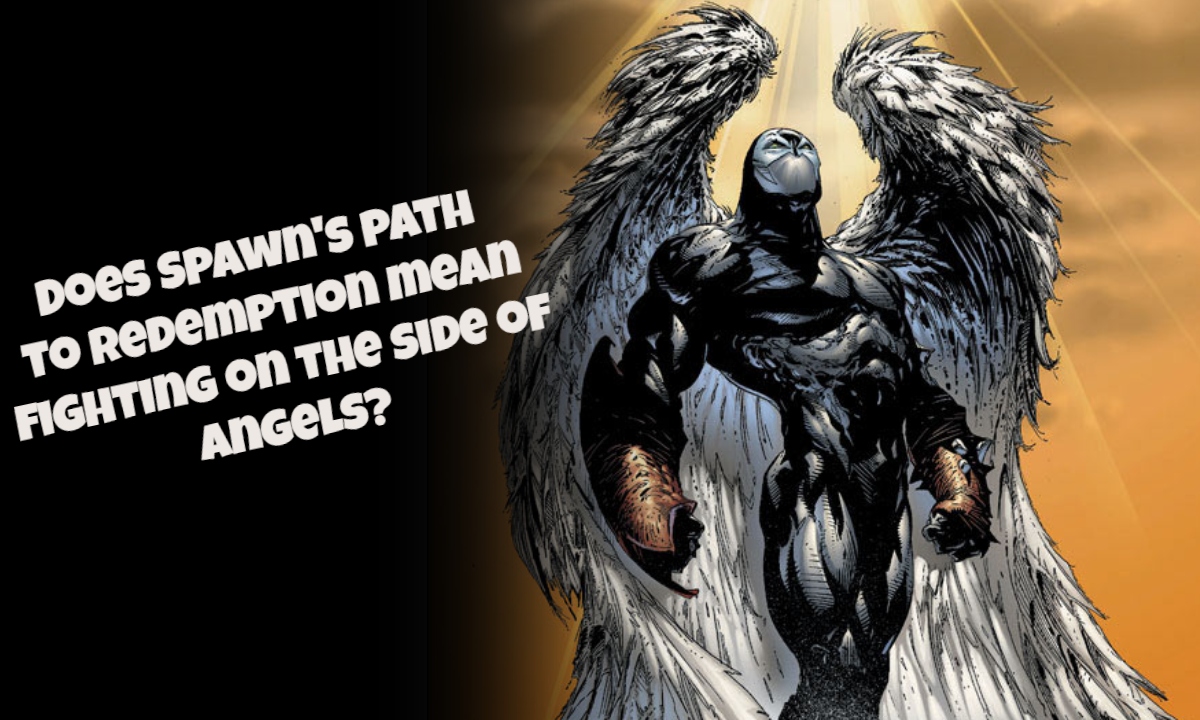
Nagaraja by Hurrican
Price:~$40
Players:2
Playtime:30 minutes
Perfect for: Duos who enjoy a tile-drafting, card-playing duel of equal parts strategy and luck.
Nagaraja (which roughly translates into “king of the serpents”) is a game where two players race against each other to acquire points. The acquisition of these points comes through gameplay that combines cunning and chance. Before talking more about how Nagaraja is played, here is more background on the theme as described by the publisher, Hurrican:
Twin temples of two forgotten divinities containing ancient relics have been discovered in India. You set off on a treasure hunt, racing to find them before your rival, but your progress is slowed by a constantly shifting maze of paths… And eternal damnation awaits anyone foolish enough to uncover the three cursed relics of the evil god Garuda!
In Nagaraja, two opponents each set up their boards: a nine-by-nine grid with nine relics face down around the perimeter. During each round, players vie for the currently available room/tomb tile—a square that can go onto the board connecting entrances to the perimeter (where the relics are) given path configuration on it. Players build out their path system to connect to relics, and when the path is complete, the relic is flipped over and scored. Players win these room/tomb tiles by tossing four-sided sticks, with different values on each side (basically skinny rectangular dice). The person who rolls the most of a particular symbol wins the tile. When a player scores 25 points, they wins!
RELATED: Tabletop Game Review: Euphoria
What works in Nagaraja is the variability and strategy that develops over multiple playthroughs. The core mechanic of Nagaraja is fairly straightforward: draft a tile, place a tile, reveal relics, score points. However, there are other actions and options that keep the game engaging and interesting. For example, players collect cards that can both assist themselves or disrupt their opponents. Such cards include messing with the other players’ path system, switching around tiles, or making an opponent throw their sticks again. These elements make Nagaraja a bit more dynamic especially when considering the push-your-luck component: some relics are cursed, which means when revealed they score the player more points but if all three cursed relics are revealed, that player instantly loses.
While Nagaraja takes a few fairly standard mechanics and spices them up, the iconography is a little confusing so consistent translation lookups while certainly hamper the first few games. This is a shame because the majority of the components are actually quite nice including the card artwork and the dice sticks. The rules and powers could simply be a little more intuitive, but that’s a minor quibble. Also, if you’re not a fan of luck being integral to winning, then this might not be for you.
Nagaraja is a very simple but solid two-player game. Its price tag feels a little high for what you get, but the Nagaraja is pretty well balanced, can be both exciting and strategic, and has enough variance to justify repeat play. For individuals who enjoy a little randomness to compliment their decision-making, then this is a good fit.
Recommended if you like: Carcasonne: The Castle, Kingdomino
Final Grade: A-
Don’t forget to share this post on your Facebook wall and with your Twitter followers! Just hit the buttons on the top of this page.

 FOR FANBOYS, BY FANBOYS
Have you checked out LRM Online’s official podcasts and videos on The Genreverse Podcast Network? Available on YouTube and all your favorite podcast apps, This multimedia empire includes The Daily CoG, Breaking Geek Radio: The Podcast, GeekScholars Movie News, Anime-Versal Review Podcast, and our Star Wars dedicated podcast The Cantina. Check it out by listening on all your favorite podcast apps, or watching on YouTube!
Subscribe on: Apple Podcasts | Spotify | SoundCloud | Stitcher | Google Play
FOR FANBOYS, BY FANBOYS
Have you checked out LRM Online’s official podcasts and videos on The Genreverse Podcast Network? Available on YouTube and all your favorite podcast apps, This multimedia empire includes The Daily CoG, Breaking Geek Radio: The Podcast, GeekScholars Movie News, Anime-Versal Review Podcast, and our Star Wars dedicated podcast The Cantina. Check it out by listening on all your favorite podcast apps, or watching on YouTube!
Subscribe on: Apple Podcasts | Spotify | SoundCloud | Stitcher | Google Play




